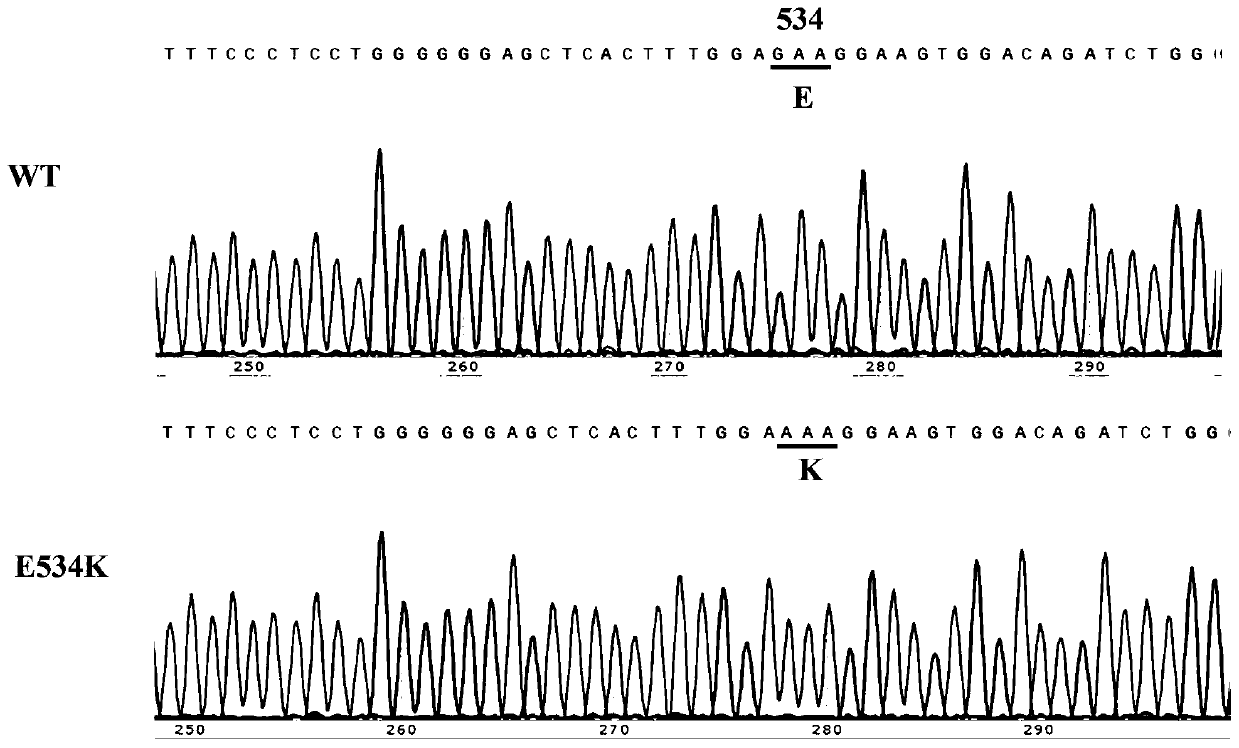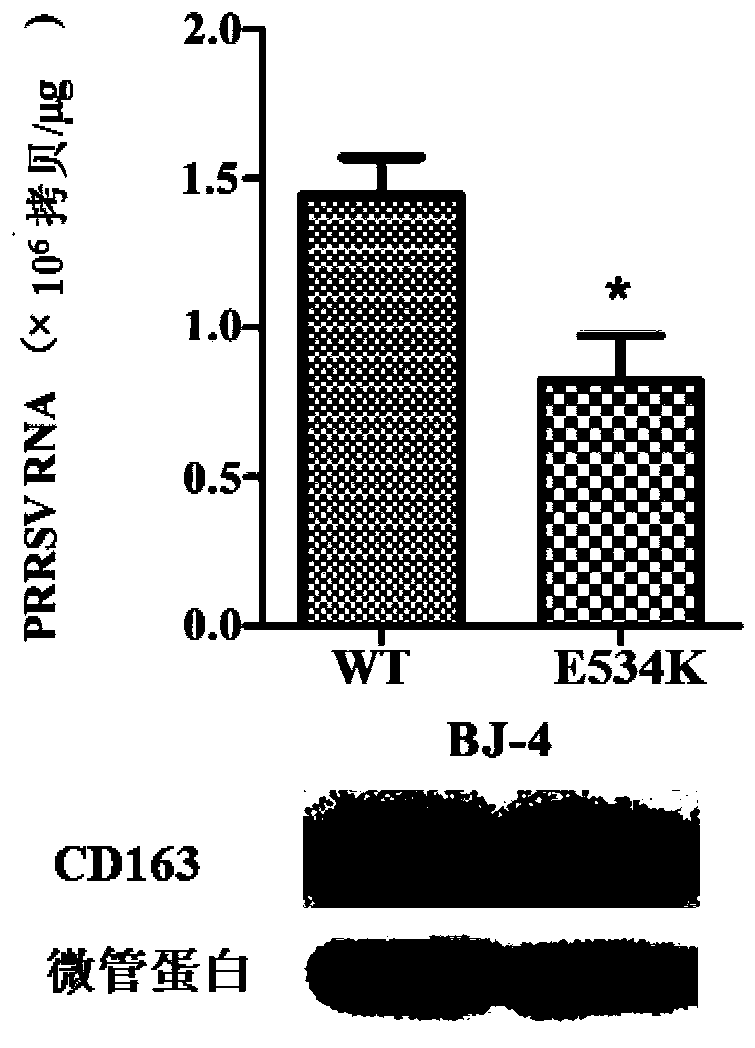CD163 mutant and application thereof
A mutant and amino acid technology, applied to CD163 mutants and their application fields, can solve problems to be fully revealed and so on
- Summary
- Abstract
- Description
- Claims
- Application Information
AI Technical Summary
Problems solved by technology
Method used
Image
Examples
Embodiment 1
[0027] Example 1. Alignment of CD163 Amino Acid Sequences and Site-directed Mutagenesis of Amino Acids in Different Species
[0028] Through the online software Clustal Omega (https: / / www.ebi.ac.uk / Tools / msa / clustalo) CD163 of different species, including porcine CD163 (UniProt entry Q2VL90), monkey CD163 (UniProt entry Q2VLG4) and human The amino acid sequences of CD163-like (UniProt entry Q9NR16) were compared.
[0029] The result is as figure 1 As shown, the Clustal Omega software shows that the partial amino acid sequences of different sources of CD163 are conservative, and some amino acids are non-conservative amino acids, and the 534th amino acid (numbering is based on UniProt entry Q2VL90) is a polar amino acid, but the charge is different ( Both pig and monkey sources are acidic glutamic acid E, and human source is basic lysine K).
[0030] Therefore, the amino acid at this site was selected for site-directed mutation, and E was mutated into K, ie E534K. Using the P...
Embodiment 2
[0039] Example 2. CD163 wild type and mutant recombinant expression
[0040] PK-15 cells were treated at a cell concentration of 2.0×10 524-well plate per cell / ml, 500 μl / well; remove the original cell culture medium, add DMEM medium containing 10% (v / v) heat-inactivated fetal bovine serum, 100 U / ml penicillin, 100 μg / ml streptomycin 500 μl (Gibco Company, USA), cultivated for 12 hours. The wild-type and mutant CD163 plasmids were transfected with Lipofectamine LTX reagent withPlus reagent transfection reagent (Invitrogen, USA) according to the operating instructions, 1 μg plasmid / well. After 24 hours of transfection, remove the cell culture medium, collect the cells with a cell scraper, and centrifuge at 3000 g for 5 minutes; resuspend with PBS, then centrifuge, and wash twice with PBS. PBS was discarded, and 100 μl of cell lysate (Shanghai Beyotime Biotechnology Co., Ltd.) was added to obtain whole cell lysate (WCL); centrifuged at 13000 g, 4°C for 15 min, to obtain WCL su...
Embodiment 3
[0042] Example 3. CD163 mutant inhibits PRRSV from infecting host cells
[0043] 3.1 Real-time quantitative PCR detection of PRRSV-infected host cells
[0044] Incubate the PK-15 cells expressing wild-type or mutant CD163 in Example 2 at 37°C for the PRRSV BJ-4 strain with a multiplicity of infection (MOI) of 1; discard the cell supernatant, wash the cells three times with PBS, Viruses from uninfected cells were washed away; 500 μl DMEM medium was added to the cell wells, and cultured at 37° C. for 12 hours.
[0045] Collect the cells, discard the cell supernatant, and wash the cells three times with PBS. Use RNA extraction reagent TRIzol (Invitrogen, USA) to extract the total RNA of PRRSV-infected cells, use PrimeScript TM The reverse transcription kit (TaKaRa Company) generates complementary DNA (cDNA) as a template for fluorescent quantitative PCR. The pMD-18T-ORF7 plasmid stored in the laboratory was used as a standard, and the 10-fold dilution was used as a template to...
PUM
 Login to View More
Login to View More Abstract
Description
Claims
Application Information
 Login to View More
Login to View More - R&D Engineer
- R&D Manager
- IP Professional
- Industry Leading Data Capabilities
- Powerful AI technology
- Patent DNA Extraction
Browse by: Latest US Patents, China's latest patents, Technical Efficacy Thesaurus, Application Domain, Technology Topic, Popular Technical Reports.
© 2024 PatSnap. All rights reserved.Legal|Privacy policy|Modern Slavery Act Transparency Statement|Sitemap|About US| Contact US: help@patsnap.com










